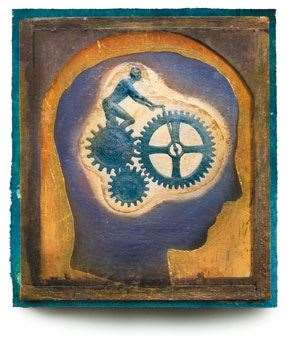The philosophies of sports physiologist Dr Bruce Ogilvie were dismissed at first, then adopted as commonplace. And still are.
The philosophies of sports physiologist Dr Bruce Ogilvie were dismissed at first, then adopted as commonplace. And still are.
 Image: Getty Images
Image: Getty ImagesSports psychology has many “fathers”. In the 1880s, Norman Triplett first explored the advantages of training in groups. In the 1930s, Coleman Griffith established the first sport psychology lab. But they lived at a time when no one was ready for a “hands-on” approach to psychology in sport.
It was Dr Bruce Ogilvie’s studies of player-coach relationships, the psychology of success and failure and the management and resolution of crisis that became the blueprint for much of the theory that impacts on sport. Today, performance improvement programs, psychological assessment techniques, crisis intervention and development programs for coaches and trainers are considered the basis of any effective sporting team or program.
By the 1950s, the thought of seeing a psychologist was still abhorrent to the average person. In America, where the success mentality stemmed from national myths of independence, conquest and superiority, the intrusion of wacky shrinks into sport was
viewed with suspicion. Ogilvie’s gentle and engaging demeanour, as much as his expertise, enabled him to open the door, but even for him, it wasn’t easy.The initial mistrust was noted by a former colleague and student of Ogilvie’s at San Jose State University, Rick Milam. “Players, especially coaches … never wanted to admit they saw him.”
When Ogilvie began his pioneering work in the 1940s, the coach was like any other boss: a remnant of the industrial revolution, dictatorial and wary of any “challenge” to his authority. By the time he finished his distinguished career, he had coaches acknowledging and managing their own anxiety, fitness, stress, family pressures, doubts and fears – factors that no one previously wanted to acknowledge. Certainly, no one wanted to see a “headshrinker” about them. Ogilvie became renowned at San Jose State University as an imposing but kind, insightful man.
Born in Canada in 1920, he wasn’t the product of a privileged or supportive upbringing. He attained his PhD in the early 1940s. Financially strapped, and with two young kids to support, Ogilvie moved to London and, while his wife sang for a crust, he resorted to something he excelled in at school and engaged in wrestling exhibitions. After gaining his doctorate, he moved back to the States for a professorship at San Jose, and instituted a psychology program directed exclusively at sport.
In the 1950s, Ogilvie began to use the principle of imagery, or imagined sensations, as preparation. As a result of his work, cognitive solutions such as visualisation, scripting and relaxation techniques – methods now considered “leading edge” – began to be used by athletes from the elite levels to the little leagues. Today, visualisation has entered the popular vocabulary. The day Ogilvie audiotaped athletes as they imagined an upcoming game, a new world opened up to sport. By mapping the athlete’s mental state, Ogilvie was able to make the connection between his psychological and social history and his performance. The effect upon the individual was unprecedented.
As manager of the university basketball team, Milam subjected himself to one of Ogilvie’s tests. “I couldn’t sleep for three days. Everything he said was like those inner thoughts you never said out loud.”Ed Burke, a former US Olympian and student of Ogilvie’s, recalls the Dr’s classes. “They were extremely popular. He would give every student a hug when they walked in. He was a pioneer. No one ever dreamed that athletic success was associated with your genetic and social makeup.”
Burke also remembers coaches’ aloofness. “He had to deal with that all the time. He’d try to make them realise he was a tool for
them to use. Then the coach could help motivate the athlete. Bruce had a great vision of what people could become.”In addition to being an Olympics consultant and lecturer in the USA and Europe, Ogilvie published prolifically, and his 1966 book, Problem Athletes and How to Handle Them, written with Dr Thomas Tutko, outlined methods to apply his groundbreaking motivational principles. The book’s Athletic Motivation Inventory measured personality traits such as leadership and mental toughness that were favourable to athletic accomplishment.
Ogilvie’s techniques had broader application. More concerned than most with the social and psychological effects of success, Ogilvie wrote in The New York Times in 1987 words that Australia’s AFL and NRL would do well to heed: “It’s important to have the minor league player look into the future and rehearse life as a major leaguer. One of the main stresses that can destroy them will be the pedestal effect, whereby the fan will idealise and judge them against almost inhuman standards. When working with the budding star, my goal is to drive home the role they will have in the lives of fans and determine the extent to which they can honour this role.”The same care, he wrote elsewhere, should extend to coaches, whom Ogilvie identified as habitual winners often in helpless situations, under enormous stress.
Ogilvie died in 2003, but lived long enough to see his unthinkable theories and approaches become commonplace.
– Robert Drane
Related Articles

Socceroo-in-waiting seals Championship deal

Fringe Socceroo swerves A-League to remain in Europe after Fulham exit












